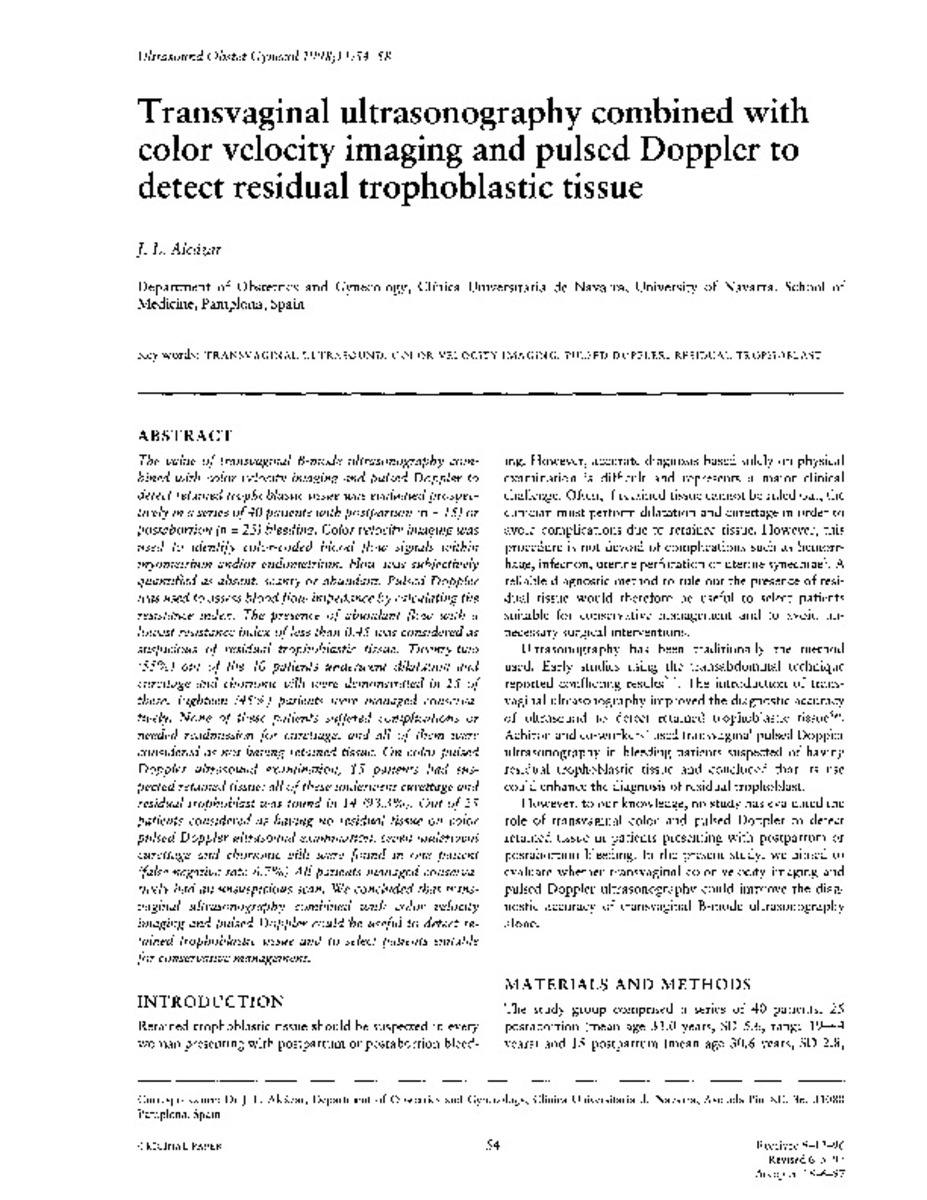Transvaginal ultrasonography combined with color velocity imaging and pulsed Doppler to detect residual trophoblastic tissue
Keywords:
Endometrium/blood supply/ultrasonography
Postpartum Hemorrhage/ultrasonography
Blood Flow Velocity
Publisher:
Wiley-Blackwell
Citation:
Alcazar JL. Transvaginal ultrasonography combined with color velocity imaging and pulsed Doppler to detect residual trophoblastic tissue. Ultrasound Obstet Gynecol 1998 Jan;11(1):54-58.
Statistics and impact
0 citas en

0 citas en

Items in Dadun are protected by copyright, with all rights reserved, unless otherwise indicated.







